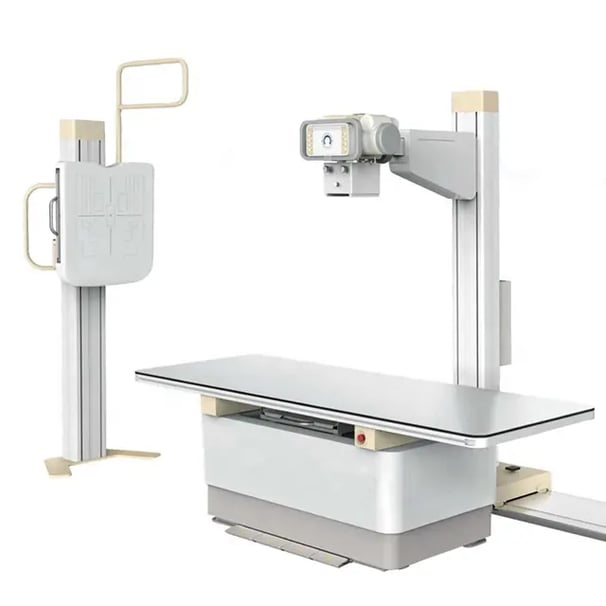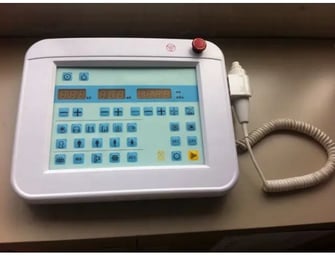High frequency stationary digital X ray machine
A High-Frequency Stationary Digital X-ray Machine is a modern diagnostic imaging system designed to provide high-quality X-ray images with a focus on patient safety and operational efficiency. Unlike portable X-ray systems, stationary models are typically installed in dedicated radiology rooms within hospitals, clinics, or diagnostic centers. These systems utilize high-frequency X-ray generators, which deliver stable and consistent X-ray output, improving image quality while minimizing radiation exposure. The integration of digital radiography (DR) technology eliminates the need for traditional film processing, offering immediate access to high-resolution images and enhancing overall workflow.
High-frequency technology allows for more efficient energy conversion, delivering the necessary X-ray power with lower radiation doses, which is crucial in improving diagnostic accuracy while reducing the risks to patients and operators.
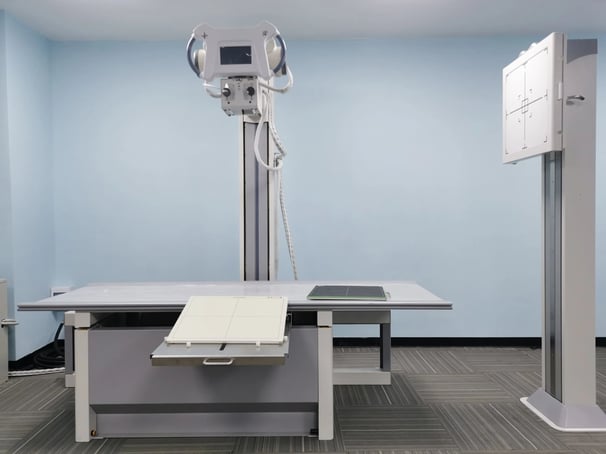

Key Features:
High-Frequency X-ray Generator:
Efficient energy output: High-frequency generators produce more consistent and stable X-ray energy, resulting in clearer, sharper images with less distortion.
Reduced radiation exposure: These systems use lower radiation doses while maintaining high image quality, making them safer for patients, particularly for those who may require repeated imaging.
Digital Radiography (DR) Technology:
Instant image acquisition: Digital detectors capture X-rays and convert them into high-resolution images instantly, reducing patient wait times.
Improved image clarity: The digital system ensures better image contrast and detail, aiding in more accurate diagnoses.
Image manipulation: Allows for enhancement, zooming, and adjustment of contrast and brightness, offering more detailed insights into the imaged area.
Low Radiation Dose:
High-frequency X-ray machines produce a lower dose of radiation compared to conventional machines, improving safety for both patients and healthcare workers.
The system's automatic exposure control (AEC) adjusts the radiation dose based on patient size and the area being imaged, ensuring minimal exposure for optimal image quality.
User-Friendly Interface:
The system comes with an intuitive touchscreen or digital console, making it easy for radiologists and technicians to operate.
Pre-set protocols for different examinations, reducing manual adjustments and speeding up the imaging process.
Advanced Imaging Capabilities:
Capable of performing a wide variety of imaging exams, such as orthopedic imaging, chest X-rays, and abdominal imaging, with excellent quality for both routine and emergency diagnostic purposes.
Ideal for capturing multiple projections, including lateral, frontal, and oblique views, providing comprehensive diagnostic data in a single session.
Compact and Space-Efficient Design:
The stationary X-ray machine is designed to fit into smaller spaces while offering robust performance.
Its compact form factor makes it an excellent option for healthcare facilities with limited room for large imaging equipment.
Integration with PACS and RIS:
Seamlessly integrates with Picture Archiving and Communication Systems (PACS) and Radiology Information Systems (RIS) for efficient storage, retrieval, and sharing of images.
This allows for easy access to patient data, aiding in faster diagnosis and consultation with other healthcare professionals.
Reliable and Durable Construction:
The high-frequency stationary X-ray machine is built for long-term, consistent performance, making it a dependable tool for high-volume imaging centers and hospitals.
Low maintenance and durable components ensure the equipment remains operational for many years with minimal downtime.
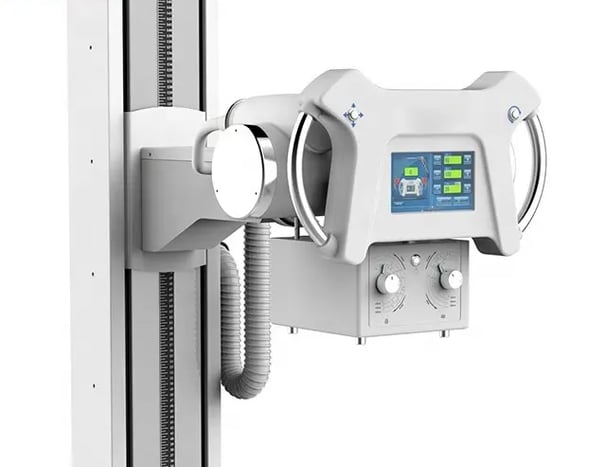

Applications:
Orthopedic Imaging:
High-frequency stationary digital X-ray systems are frequently used for bone and joint imaging, allowing detailed views of fractures, fractures healing, spinal issues, and conditions like arthritis.
It provides excellent clarity for visualizing complex bone structures and injuries.
Chest Imaging:
Used to detect and monitor lung diseases such as pneumonia, tuberculosis, lung cancer, and pulmonary edema.
Chest X-rays are an essential tool in emergency departments and for routine health checks.
Abdominal Imaging:
These systems are ideal for examining abdominal issues, including gastrointestinal problems, kidney stones, and abdominal tumors.
High-quality imaging aids in diagnosing conditions like gallstones, bowel obstructions, or digestive tract abnormalities.
Pediatric Imaging:
The system is designed to provide low radiation exposure, which is especially important when imaging pediatric patients. It is effective in evaluating fractures, infections, and congenital conditions in children.
Trauma and Emergency Imaging:
In emergency settings, the high-frequency X-ray system provides rapid, high-quality imaging for trauma patients, including detecting fractures, internal bleeding, and dislocations.
Its quick imaging capabilities make it essential for fast decision-making in trauma care.
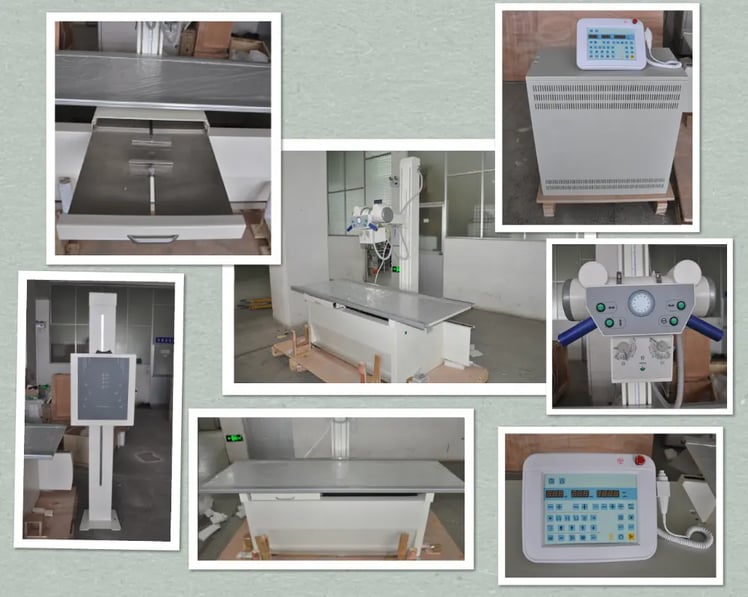

Why Choose a High-Frequency Stationary Digital X-ray Machine?
Superior Image Quality:
The combination of high-frequency technology and digital radiography results in clearer, more detailed images compared to conventional X-ray machines. This enhances the diagnostic accuracy, ensuring better patient outcomes.
Lower Radiation Exposure:
High-frequency X-ray systems are known for their efficient use of radiation, providing high-quality images with minimal radiation exposure. This is particularly important for patients who need repeated imaging, such as those with chronic conditions or in pediatric care.
Faster Results and Efficient Workflow:
With instant image capture and processing, there is no need for time-consuming film development. This speed enhances workflow efficiency, reduces patient waiting times, and helps healthcare providers make faster decisions.
The system's automatic exposure control optimizes settings for each patient, ensuring quick and accurate imaging without the need for constant manual adjustments.
Cost-Effectiveness:
Over time, digital X-ray systems can significantly reduce costs associated with film development, film storage, and chemicals. The digital storage capability eliminates the need for physical storage space, further reducing operational costs.
Versatility and Multi-Functionality:
These systems are capable of performing a wide range of imaging examinations across various medical disciplines, from orthopedics and trauma to chest and dental imaging. This makes them versatile and suitable for multi-specialty healthcare settings.
Space-Saving Design:
The compact and stationary design of the system makes it suitable for healthcare facilities with limited space, while still providing high-quality imaging capabilities.
Reliable and Durable:
High-frequency X-ray machines are known for their reliability and longevity. Their robust design ensures long-term service with minimal maintenance, making them a dependable investment for medical facilities.
Enhanced Patient Comfort:
The system’s low radiation exposure and fast imaging process ensure a more comfortable experience for patients. There is less waiting and less exposure to harmful radiation, particularly important in sensitive populations like children or elderly patients.
